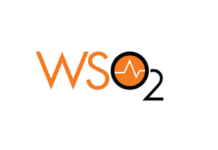By Dr. Sreekanta Swamy, Head of Neurology, Aster RV Hospital
A migraine can affect people across all ages ranging from young children to the elderly population. According to research, women are three times more likely to be affected by migraine than men. However many people do not seek proper diagnosis of migraine. This is because a migraine can be unpredictable and difficult to diagnose. There are several different triggers that may create a migraine attack that a person may dismiss as a bad headache; however this is not the case. If an individual suffers from recurring headaches that are painful enough to disrupt normal life, it could be a case of migraine and they must seek help and find relief.
Headaches are one of the most common neurological disorders for which people seek medical advice throughout the world. It constitutes of a significant number of patients attending to any medical outpatient departments. Headaches are broadly categorised into two main groups – Primary and Secondary. More than 90% of all headaches are primary – where there may not be any demonstrable cause by any investigations. Among the primary types, tension headaches are the most common, followed by the next most common type which is a Migraine. The month of September is observed as migraine awareness month in order to educate and create awareness about the condition and the developments relating to it in the field. Migraine is a disabling type of headache which affects more than one billion people all over the world.
There are 2 types of migraine headaches.
1. Migraine without aura (amounts to 80% of all migraine)
2. Migraine with aura
Most people with migraine experience pain on one side of the head, which starts with a mild intensity to slowly become severe pain, which could last for a few hours to 1-2 days, and they may experience associated nausea or vomiting. Sensitivity to light and sound may also be a feature during the headache period.
Migraine is an under diagnosed and under treated neurological problem. It is basically caused by an increased sensitivity of brain for various factors, which may be influenced by generic, environmental and daily life style factors. This condition alone can incur a huge economic burden on the society at large due to multiple factors. Some of which are the costs of medications, medical investigations, hospitalisations, etc which amounts to a significant loss of economy. Additionally, the loss incurred due to the loss or decreased productivity secondary to disability is huge.
If someone gets frequent migraine headaches, he /she may be put on daily medications for some time. Frequent usage of pain reliving mediations can result in what is called medication induced headache and chronic migraine, which are very disabling and difficult to manage. Identifying the triggers for migraine helps in preventing the headache. Stress is an important trigger for migraine headache, irregular sleep, eating habits, weather changes, strong smells, many food items specially canned food are other important triggers for migraine.
A combination of medications, avoiding trigger factors, and proper management of life style are the main goals in proper management of migraine prevention. While primary headaches such as migraine can be managed, secondary headaches which may have similar symptoms to a migraine but require immediate medical attention as they could point to a stroke or bleeding in the brain. In case any individual exhibits severe pain in the forehead, accompanied with symptoms such as loss of consciousness, nausea and vomiting, they must immediately visit the doctor to rule out other life-threatening conditions and properly diagnose the symptoms.
Corporate Comm India (CCI Newswire)























